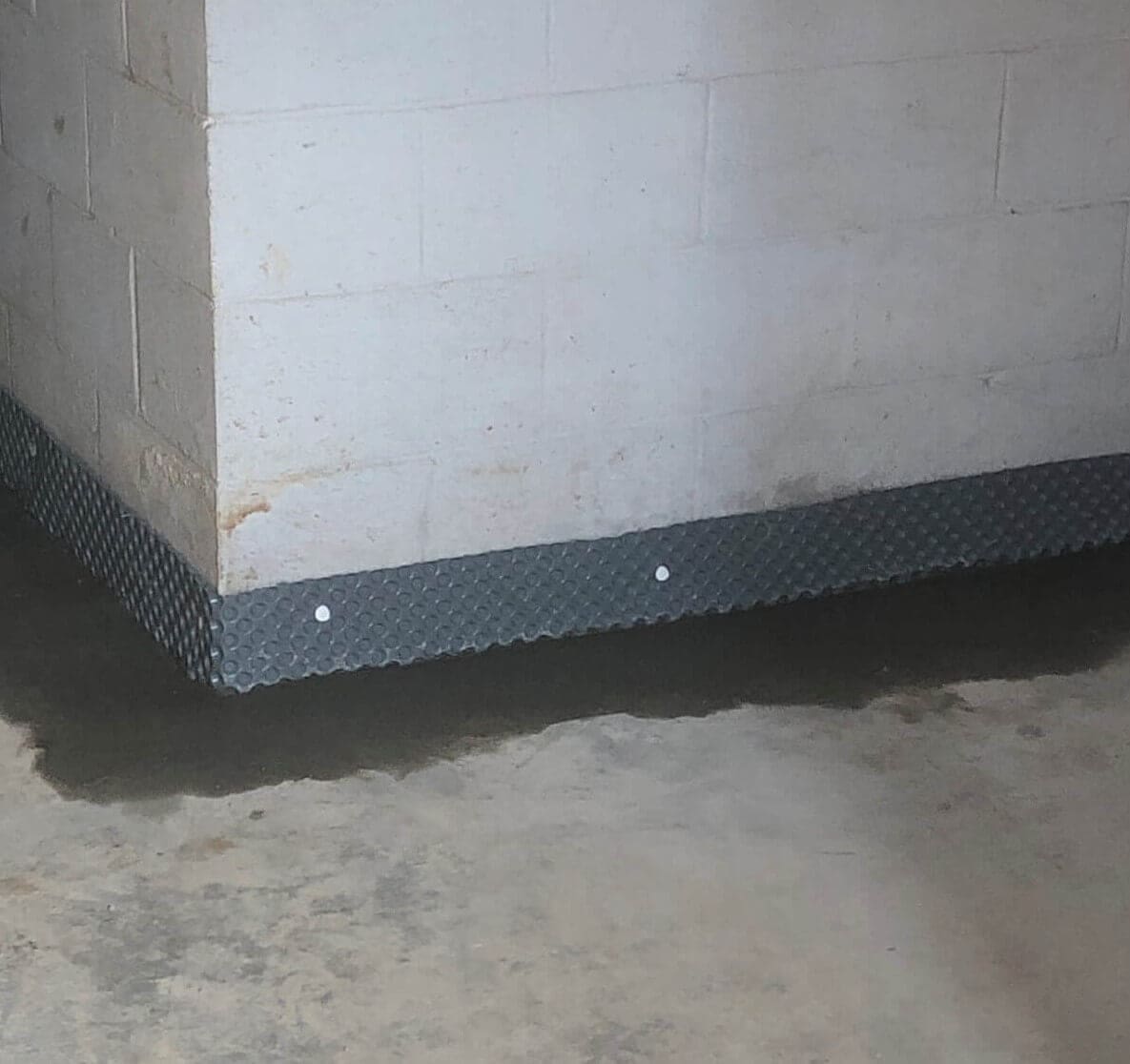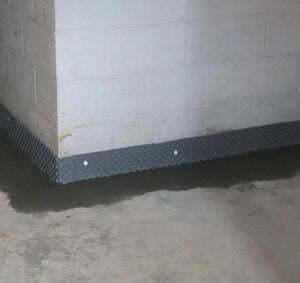What’s the Cost to Waterproof Your Basement? Detailed Types & Pricing.

Originally posted 12/12/19, updated 12/14/22
Maybe you want to add an in-law suite, a home theater room, or a fitness room. Maybe you’ve just recovered from a third upper respiratory infection this winter, or your child has been diagnosed with asthma. Maybe you’re just tired of being grossed out by the smell every time you open the basement door. Whatever the reason, you’re done with your wet basement and now it’s time to research the options.
At Acculevel, we’ve been waterproofing basements since 1996, and we are often asked about our pricing. There are variables to consider, so we’re going to explore the options and give you the price ranges associated with each:
- Size of your basement
- Age of your home
- Foundation type
These factors don’t just determine just how much waterproofing will cost- they also help us select the best method for you.
Basement Size and Existing Layout
The first thing to consider is the basement size. Most contractors calculate the cost of drainage based on linear footage. This isn’t to be confused with square footage- that’s the formula you use to buy flooring or paint. Those decisions should wait until the basement is dry and ready for an upgrade.
However, if the previous homeowner finished the basement without waterproofing it, you probably have a mess to clean up now. You may have to remove some (or all!) of the drywall and flooring to find the source of the water. If this is the case, make sure you include the costs of both demolition AND re-finishing into your budget.
Home’s Age and Footing
Homes built in the late 1960s or later are generally less expensive to waterproof. This is because they have a footer component to their foundation. This allows the water tunnel to rest directly on top of the footer. The water tunnel is u-shaped, using the existing footer as the fourth side. This type of drainage usually costs $67-$81 per linear foot, as long as there is at least 20 feet of waterproofing to be done.
FYI: Pricing given in this article includes both labor and materials. Our linear foot minimum does NOT mean we won’t install less than that.
Older homes may not have a footer in place, or they may have a very thin (less than 3 inches thick) concrete floor. These variations require a contractor to use fast track drainage. Fast track is a rectangular shape, with slits cut into it on all four sides. This type of drainage is more expensive, ranging from $76-$92 per foot with a 15 foot minimum.
Options that Reduce Costs
- It’s entirely possible you don’t need drainage around the entire perimeter of the basement. If you only have one or two areas of concern, you can install drainage in those places alone.
- If you have an existing and properly working sump pump, then there is no need to replace it.
Foundation Material
If your foundation is made of concrete block, water can seep into the blocks and fill the hollow cavities. This buildup can decay the blocks, grow mold, and eventually seep into the interior of your basement. To prevent this, weep holes are drilled into the lowest block. This allows the water to drain into the installed drainage track, and keeps the wall dry and intact.
How Do You Calculate the Price?
Want to do a bit of math? It’ll be easy, I promise! Let’s say you have a 1500 square foot ranch home with a full basement, built in 1975. The perimeter walls are 115 linear feet long, and the foundation wall is block with a standard footer. The water tunnel is approximately $74/foot, so 115 x $74 = $8510. If you need a sump pump system, add $2800-3500. This gives you an estimated total cost of $11,660.
How Waterproofing Systems Are Installed
First, the concrete floor next to the wall is broken up and removed (a section about 6-8 inches across). If needed, weep holes are drilled.
 This picture was taken by an Acculevel crew member during a routine installation. You can see the weep holes drilled in foundation blocks to drain into the water tunnel.
This picture was taken by an Acculevel crew member during a routine installation. You can see the weep holes drilled in foundation blocks to drain into the water tunnel.
Second, the drainage track is placed on the footer (or next to the wall if no footer is present). Gravel is placed around the track, which both filters the water and holds the track in place. The track drains into the sump pit for the pump to discharge.
If your walls are block, dimple board is attached to the wall, to cover the weep holes. After all the components are in place and connected, new concrete is poured over the track to replace the removed floor sections.
 This picture was taken by an Acculevel crew member during a routine installation. Water tunnel is under the newly poured floor, and the dimple board is partially visible.
This picture was taken by an Acculevel crew member during a routine installation. Water tunnel is under the newly poured floor, and the dimple board is partially visible.
Complications that Increase Costs
If you have significant water damage, you may need to repair that before doing any waterproofing. The most common problems we see are:
- Hairline cracks letting in water. These need to be filled and sealed.
- Wall has an expanding crack or is actively bowing. Immediate steps should be taken to stabilize the foundation.
- The water table in your area is high. In this case, you may need to add an additional sump pump, or install a heavy-duty model. If you plan to finish the basement, you may also want to encapsulate the walls. This will guarantee any water that seeps in will not reach drywall.
- Mold is present. This should be treated after the water is drained and the surface is clean and dry.
- If there are cracks across the basement floor, additional drainage in this area may be necessary.
FYI: You may have noticed that we did not suggest using waterproofing paint in this article. This may be a popular project for DIY fans, but we do not recommend it. These are temporary solutions, even when properly applied. They do not address the water that may be inside the walls- nor do they inhibit mold growth in any way.
Additional Resources for You
If you have additional questions about basement waterproofing, we encourage you to check out our guide to basement waterproofing. This covers all the related topics, as well as the questions most frequently asked by homeowners.
Is this the first time you’ll be hiring a contractor to work on your property? We have a list of questions that you should ask a contractor, complete with printable checklist.
Have health concerns, and not sure how to safely meet with a contractor without exposure? The COVID-19 outbreak prompted us to develop ways to work with our customers with minimal risk, and we review that information in this blog.
What’s Your Next Step?
In the last 12 months, Acculevel’s average cost for basement waterproofing has been $5700-$7100. Your costs could be more or less, depending on the factors we’ve reviewed. Before making a decision, you should do a bit of homework! If you don’t know the age of your home, check your records- that will help decide if you need water tunnel or fast track. Then, grab a tape measure and check out the basement dimensions. Once you have clear expectations, then it’s time to act.
Find an experienced local foundation company, and make an appointment. Before you sign a contract for any service, you should always verify the company is reputable, insured, and accredited by the Better Business Bureau.
If you live in Indiana or the surrounding states, contact Acculevel. Established in 1996, we specialize in foundation repairs and basement waterproofing. If you have damp places or water seeping into your basement, request a free estimate. An experienced project advisor will evaluate your crawl space conditions and recommend the best course of action for you, to keep your home strong and healthy for years to come.
We have also created a free tool that any homeowner can use to see what could be causing problems in your home and how to fix it. Identify problems, explore solutions, and get advice on how and when to take action with our Symptom Checker.
